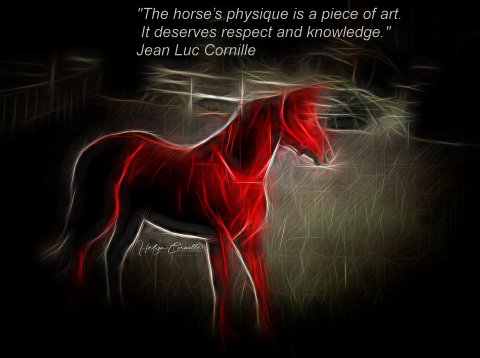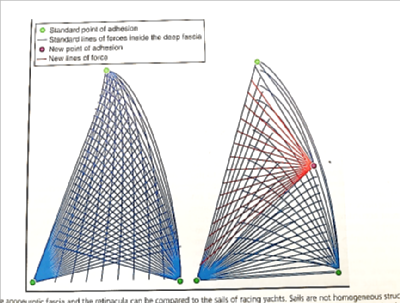Magic
Magic
Jean Luc Cornille

Magic is essentially the higher understanding of nature
Magic cannot be understood at the level of our rational thinking, but there is an explanation. Like nature and riding, the reason does not fit conventional thinking but became very clear and fascinating when we look beyond and above traditional views.
Grazing animals constantly move, knowing that eating the grass to a point allows it to grow back. Humans eat the grass down to the root, destroy the seed and pray that the grass will grow again. Wild animals, which have been killed up to 60% by humans, have reached a level of consciousness that only 10% of humans have the intelligence to reach. Wild animals live with nature. They don't pretend to own it. They have beautiful moments and ugly moments. Like us, they have empathy and brutality, but they don't destroy the planet for profit. They are part of a gigantic chain of causes and effects that Alexander von Humbold described as the web of life. Not even the tiniest organism is on its own.
No single fact can be considered in isolation. Only the human thinks that he is the center of the web. 
When nature is perceived as a web, its vulnerability is apparent; if one thread of the web is pulled, the whole tapestry may unravel. As well in equine, trauma or surgery can modify force lines by creating new attachments. One cannot fix a problem acting on one body part without understanding how it interacts with others. "The proper functioning of the locomotor system depends on the precise synchronization of the movement of each part on every other part and in relation to the body as a whole." (James R. Rooney)
The same integrity applies to the riding. Asking greater engagement of the hind legs without coordinating the whole thoracolumbar spine for such engagement exposes the horse to stifle injury. The literature of the past does not prepare us for actual knowledge. Our ancestors' wisdom gives us a sound basis, but actual knowledge demands upgrading our ancestors' beliefs. In 1949, Talking about a horse having difficulties executing half pass, General Decarpentry advised giving the horse the time to understand the aids. "Once the horse has overcome his initial clumsiness, he will obey the aids instead of distorting their effects by resistances the origin of which eludes us." (Academic Equitation, 1949) We have today enough understanding of the athletic demand of half pass, as well as other performances, to comprehend the origin of the horse difficulties and correct the root cause. We have enough understanding of equine mental processing to realize that the horse does not distort the effect of our aids but instead respond to our demand protecting whatever muscle imbalance, morphological flaw or other issue that is part of the horse's "body state" at the instant that the aids are applied. The "distortions" are indeed willing attempts to respond while protecting the initial issue. As long as we keep applying the aids, the horse will process different compromises protecting his initial problem. We have the capacity of analysis and it is our task to identify and correct the source, (origin), of the horse's difficulties.
Our capacity for analysis rests on our knowledge. Instead of just knowing how the move is supposed to look like, we have to have a sound understanding of the underlying biomechanics factors. Indeed, even biomechanics has to evolve from the marketing propaganda associated with the term biomechanics. Biotensegrity is more in line with actual knowledge. From molecular to the gross anatomy, every part of an organism is integrated by a mechanical system into a complete functional unit. There is an integrity of the whole physique that the equitation of the correct aids has wholly missed. Muscles never work alone, and the fascia connects the entire muscular system and augment and assist muscle function. Forces can be transported through limbs and body without power production by the transporting muscles.
It was believed at the time of Decarpentry that the rider stimulates muscles that move bones. According to the classical views, the accuracy of the aids would determine the accuracy of the horse's movement. Fifty-six years later, knowledge dismisses the action/reaction theory. "Most of the length change required for the work of locomotion, occurs not in the muscle fibers themselves but by elastic recoil of the associated tendons and muscles aponeurosis." (The role of the extrinsic thoracic limb muscles in equine locomotion. R. C. Payne, P. Veenman and A. M. Wilson. J. Anat. (2005) 206, pp 193-404). The horse having difficulty executing a movement needs the rider's higher understanding of the horse nature. If, for instance, the difficulty is the engagement and adduction of the outside hind leg, The horse likely needs greater flexion of the thoracolumbar spine. Simple adduction of the inside hind leg is achieved on a circle, combining transversal rotation of the pelvis and dorso-ventral rotation. During half pass, both hind legs adduct simultaneously. The transversal rotation of the pelvis is almost inexistent, but the dorso-ventral rotation is greater. Such dorso-ventral rotation demands longitudinal flexion of the thoracolumbar spine. The way the trunk is suspended between the forelegs is also involved. If the trunk is low between the forelegs, the thoracolumbar spine's whole mechanism is not in line for flexion and, consequently, dorso-ventral rotation of the pelvis. Since all this mechanism is the mechanism allowing balance control, the horse does not need a rider applying the same aids and expecting a different result. The horse needs a rider having a higher understanding of the horse's nature and addressing the difficulty's origin, which is enhancing the balance. Magic.
Jean Luc Cornille


 twitter
twitter facebook
facebook google
google pinterest
pinterest linkedin
linkedin